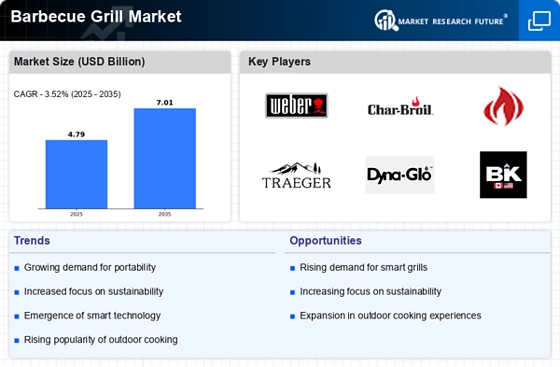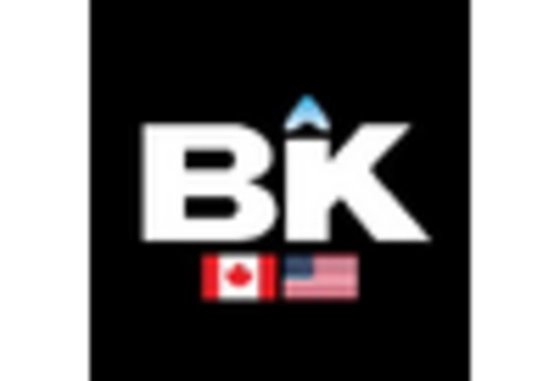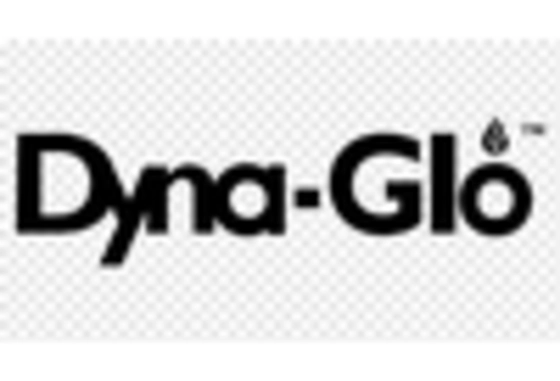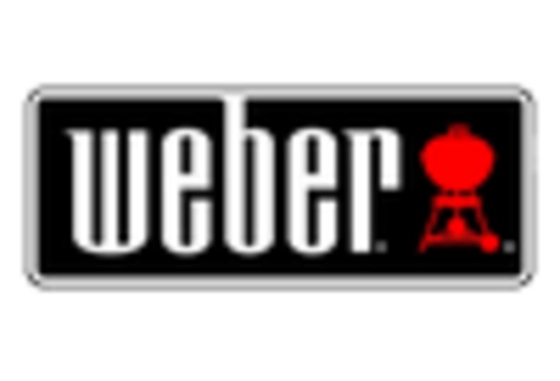Health Consciousness and Grilling
The Barbecue Grill Market is influenced by a growing trend towards health consciousness among consumers. As individuals become more aware of their dietary choices, grilling is perceived as a healthier cooking method compared to frying or other high-fat cooking techniques. Grilled foods are often lower in calories and fat, appealing to health-oriented consumers. Market Research Future suggests that the demand for grills that facilitate healthier cooking options, such as those designed for vegetables and lean meats, is on the rise. This shift not only promotes healthier eating habits but also encourages consumers to invest in quality grilling equipment. Consequently, the Barbecue Grill Market is likely to see an increase in sales of grills that cater to this health-conscious demographic, further diversifying the market.
Increasing Outdoor Cooking Popularity
The Barbecue Grill Market experiences a notable surge in demand as outdoor cooking becomes increasingly popular among consumers. This trend is driven by a growing interest in alfresco dining and social gatherings, particularly during warmer months. According to recent data, approximately 60 percent of households engage in outdoor cooking activities, which significantly boosts grill sales. The rise in home improvement projects also contributes to this trend, as consumers invest in outdoor living spaces. As a result, manufacturers are expanding their product lines to cater to diverse consumer preferences, offering a variety of grills that accommodate different cooking styles. This shift towards outdoor cooking not only enhances the Barbecue Grill Market but also encourages a lifestyle centered around family and friends, further solidifying the market's growth trajectory.
Technological Advancements in Grilling
Technological innovations play a pivotal role in shaping the Barbecue Grill Market. The introduction of smart grills, equipped with features such as Wi-Fi connectivity and app integration, allows users to monitor and control their grilling experience remotely. This advancement appeals to tech-savvy consumers who seek convenience and precision in their cooking. Market data indicates that smart grills are projected to account for a significant share of the overall grill sales, reflecting a shift in consumer preferences towards high-tech solutions. Additionally, advancements in fuel efficiency and temperature control enhance the grilling experience, making it more accessible to novice cooks. As these technologies continue to evolve, they are likely to attract a broader audience, thereby driving growth within the Barbecue Grill Market.
Growing Interest in Culinary Experiences
The Barbecue Grill Market benefits from a burgeoning interest in culinary experiences among consumers. As more individuals seek to enhance their cooking skills, grilling has emerged as a popular method for experimentation and creativity in the kitchen. Cooking classes and workshops focused on grilling techniques are gaining traction, fostering a community of enthusiasts eager to learn and share their knowledge. This trend is reflected in the increasing sales of specialty grills and accessories that cater to diverse cooking styles. Furthermore, social media platforms play a crucial role in promoting grilling as a culinary art, inspiring consumers to showcase their creations. As this interest continues to grow, the Barbecue Grill Market is poised for expansion, driven by a new generation of passionate grillers.
Sustainability and Eco-Friendly Grilling Solutions
Sustainability is becoming a key driver in the Barbecue Grill Market as consumers increasingly prioritize eco-friendly products. The demand for grills made from sustainable materials and those that utilize alternative fuels, such as electric or solar-powered options, is on the rise. This shift reflects a broader societal trend towards environmental consciousness, with consumers seeking to reduce their carbon footprint. Market data indicates that eco-friendly grills are expected to capture a larger share of the market as manufacturers respond to this demand by innovating and developing greener products. Additionally, the promotion of sustainable grilling practices, such as using locally sourced ingredients, further enhances the appeal of eco-friendly grills. As sustainability becomes a focal point for consumers, the Barbecue Grill Market is likely to evolve, aligning with these values.

















Leave a Comment